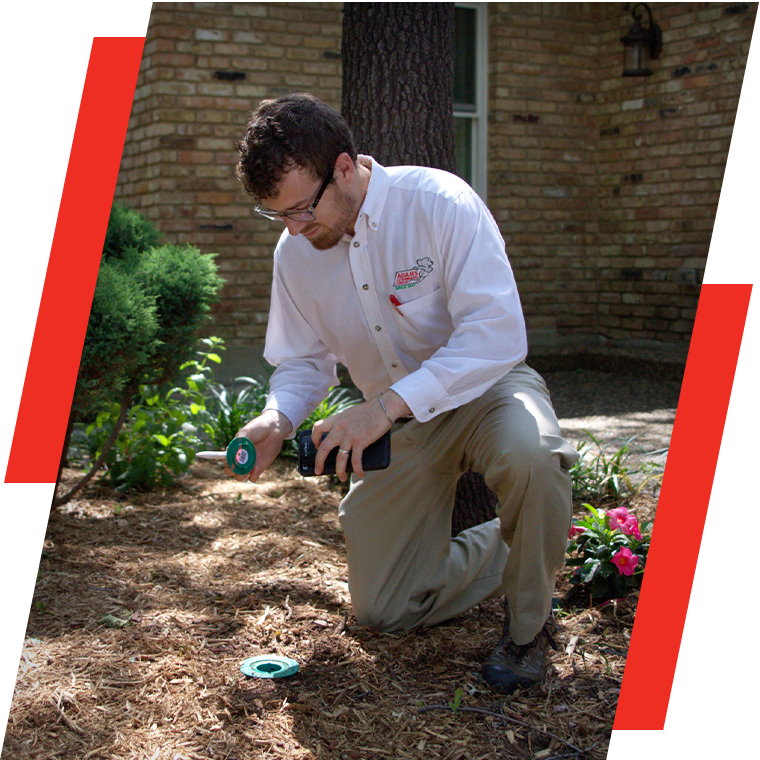
Are the Centipedes Around My Frisco Home Dangerous?
Centipedes are certainly a frightening-looking invader in Frisco homes, but are they actually dangerous? While centipedes are a common pest that is widely distributed throughout most of the United States and the world, many people know surprisingly little about these animals. Perhaps this is in part due to their nocturnal nature. Centipedes are rarely seen out in the open during waking hours, and when they are, they are lightning-fast and headed for cover. Read on to find out more about centipedes, the problems they cause, and how you can avoid them.
What Do Centipedes Look Like?
If you manage to catch sight of a centipede, you’ll likely notice its yellow to brown coloring that may or may not have stripes or other dark markings. Centipedes have an elongated, flattened worm-like body and anywhere from 15 to 177 pairs of legs splaying out to the sides and long antennae. Depending on the species, they can grow to be anywhere from ⅛ to 6 inches in length. Harder to see are their small mouths with large claw-like structures that contain a venomous gland. Some centipedes have compound eyes with as many as 200 optical units, while others have a cluster of simple eyes on each side of their head or no eyes at all.
What Else Don’t We Know About Centipedes?
We don’t tend to hear about food contamination with centipedes. Perhaps that is because they are extremely meticulous. Centipedes carefully clean each of their numerous legs after each meal. Speaking of legs, they can regrow legs that have been lost to predators and use their back legs to lasso their prey. Speed is also an essential component of the centipede’s hunting prowess. They can travel over 16 inches each second, making them extremely hard to spot, let alone catch. In other parts of the world, centipedes are renowned for their abilities and kept as beloved pets rather than pests. In captivity, centipedes are able to grow much larger than in the natural world.

Why Choose Adams Exterminating?
-
Trained Entomologists & Service TechniciansOur team brings a deep understanding of insect biology and behavior to create targeted pest control strategies. We're equipped with the latest techniques and technologies to effectively eliminate pests.
-
Customized Plans for Every BudgetRecognizing that each space is different, we customize pest control services for every home or business. Our approach involves targeted solutions, addressing specific needs for your environment.
-
Trusted in the Community Since 1947With a legacy dating back to 1947, our pest control company brings decades of experience with a proven track record to keep your space critter-free.
-
Locally Owned & OperatedAs a locally owned business with offices in both Denton and Lewisville, we are rooted in the community and dedicated to serving our neighbors with personalized service.
What Problems Do Centipedes Cause?
Despite how menacing they may look, centipedes are largely a nuisance pest. Sure they have a venomous bite, and the larger species are strong enough to break human skin if they are handled roughly, but the end result is pain and swelling similar to a bee sting. The larger problem centipedes cause is the sheer growth of their population. They typically overwinter outdoors, but if they nest near your property, they can become quite a problem. Centipedes can produce up to 35 eggs in just a few short days.
However, centipedes aren’t all bad. They actually hunt unwelcome pests such as roaches, moths, flies, silverfish, and termites. That being said, often the presence of centipedes on your Frisco property signifies an increasing presence of other pest species.
What Attracts Centipedes to Frisco Homes and How Can We Prevent Them?
Aside from pest prey, centipedes are most attracted to excess moisture. To avoid centipede infestations in your Frisco home, try using the following tips:
- Eliminate excess moisture by maintaining plumbing and drainage systems.
- Ensure adequate ventilation in basements, attics, and crawl spaces.
- Remove piles of leaves and grass clippings as well as logs, stones, and rocks that centipedes could use as nesting areas on your property.
- Store firewood off the ground.
- Seal gaps and cracks in your foundation and exterior walls that could allow centipedes to get inside.
- Invest in professional pest control for centipedes and their pest prey.
If a centipede or two gets past your defenses, simply use a vacuum to eliminate the issue, but if you think you have an infestation on your hands, it’s time to call the professionals.



